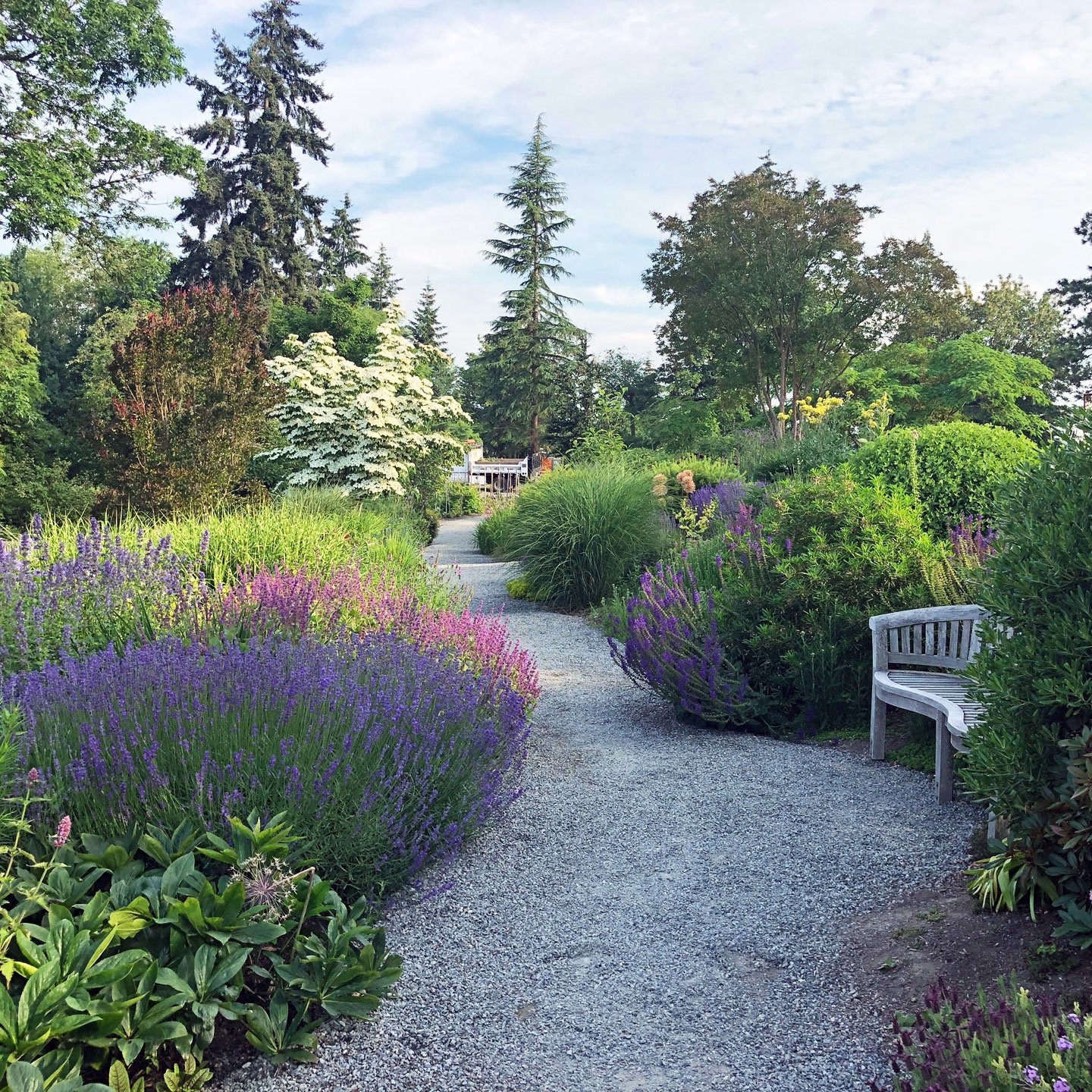MONTHLY GARDENING TIPS
Here’s what to do, what’s in bloom, and lots of tips and tricks for each month of the year. Check back each month to find new, seasonal tips for ornamental gardening, lawn care, edible gardening, and indoor plant care in the Pacific Northwest!
June Gardening Tips for the PNW
Bellevue Botanical Garden, Northwest Perennial Alliance Border
In the Garden
June is a fabulous time for flowers in the PNW garden. See our 10 Favorite Late-Spring Flowers.
Prune rhododendrons and lilacs after they are done flowering. How to Prune Lilacs and Pruning Rhododendrons offer step-by-step guides for successful pruning.
June is National Pollinator Month! Want to know which flowers attract bees, butterflies, and hummingbirds? Take a look at our Pollinator & Wildlife Garden Resources, a collection of guides to help you bring pollinators to your garden.
Deadhead annual flowers to keep your plants producing new flowers all summer long. Pinching back leggy stems will also encourage bushiness.
Your plants need consistent water to thrive - especially anything newly planted. Even if it rains in June, it’s usually not enough to fully soak the roots. Start a regular watering routine now to keep your garden healthy and growing. Need guidance? Check out Watering Tips for PNW Gardens.
Edible Gardening
New to vegetable gardening? There’s still plenty of time to plant vegetables and herbs. Here’s How to Start a Vegetable Garden.
June is a great time to plant tomatoes, squash, cucumbers, lettuce, and more. Read our guide to Growing Warm-Season Vegetables in the PNW.
Did you know that certain flowers can help your vegetables thrive? Discover The Secrets of Companion Planting.
Water, water, water! We recommend drip irrigation or soaker hoses to deeply saturate the soil and help prevent fungus and disease by keeping leaves dry.
Keep basil inside on a sunny windowsill or in the greenhouse until night temperatures regularly stay in the low-to-mid-50s.
Keep pesky slugs away from strawberries and lettuce by applying pet-friendly Sluggo. Learn about Growing Strawberries in the PNW.
Lawn Care
You can aerate, topdress, and overseed your lawn in June. Remember to keep it well-watered during these activities! See our guide, Step by Step Lawn Renovation, for more detailed information.
Deal with those dandelions now, before they spread their seeds! Spot spray or pull them, and be sure to remove as much of the taproot as possible. See our 3-step process to naturally get rid of dandelions.
Water deeply, slowly, and infrequently. Established lawns don’t need to be watered more than 2 times per week to stay green. If you want to let your lawn go dormant but not die off, give at least 1/2 inch of water two times per month throughout the summer.
Set your mower to medium height to avoid cutting off more than 30% at a time and recycle cut grass onto the lawn as you mow.
Remember, the height of the grass generally equals the depth of the roots, so keeping grass a little longer helps build a strong support system.
Indoor plants
Spring and summer are great times to repot any houseplants that may be rootbound or need a soil refresher. See our Step-by-Step Guide to Repotting Plants.
Your houseplants are growing actively right now. Apply a fertilizer formulated specifically for indoor plants throughout the summer. Be sure to follow the directions on the product label for best results. Learn more about Spring Houseplant Care.
If you plan to bring some of your houseplants outdoors for the summer, be sure to slowly acclimate them to their new environment. Start by bringing them out to a shady spot for a few hours during the day. Slowly increase the amount of sunlight and length of time outdoors until they can stay outside all the time.
Don’t think you have a green thumb? Try these 6 Houseplants for Beginners.




